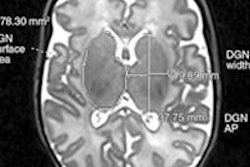The Academy of Radiology Research reported that patent output from the U.S. National Institutes of Health (NIH) is vital to understanding which areas of science are contributing most to the country's innovation economy.
The report in Nature Biotechnology, titled "Patents as Proxies: NIH Hubs of Innovation," confirms an increased economic value of NIH patents as compared with private-sector patents, as well as meaningful differences in the rate and quality of invention across different research R&D investments (Vol. 32:6, pp. 536-537).
The Academy of Radiology Research undertook the analysis to address a need from the Office of Management and Budget (OMB) and the Office of Science and Technology Policy (OSTP) to develop econometric evidence to better guide federal R&D budgets, the academy said.
Patents generated by NIH-funded research are high quality and provide a downstream economic footprint that exceeds comparable research funded by the private sector, according to the report. On average, NIH patents provide the intellectual foundation for eight additional downstream patents, while biotechnology patents created by private-sector entities only spur 1.7 future patents over a similar time period.
The report also shows that budget size did not correlate with a higher rate of new inventions. The strongest producer of new intellectual property was the National Institute for Biomedical Imaging and Bioengineering (NIBIB), the most recent institute created by Congress and the institute with one of the smallest operating budgets within NIH. Other strong producers were the National Institute of General Medical Sciences (NIGMS), the National Institute of Dental and Craniofacial Research (NIDCR), the National Institute of Arthritis and Musculoskeletal and Skin Diseases (NIAMS), the National Eye Institute (NEI), and the National Cancer Institute (NCI).
Over the past 10 years, NIBIB researchers have created 16 patents for every $100 million in research dollars, compared with 2.4 patents for every $100 million in NIH funding from other institutes. This equates to a cost of $6 million for each imaging research patent, compared with $39 million for one patent in other areas of research.
The academy is finalizing a follow-up analysis that looks at patent output through a number of additional metrics, such as by mechanism and study section.



















